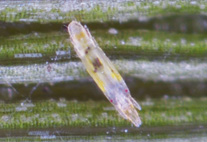Abstract
Two hundred and ninety-eight rearing records and 87 larvae and puparia were obtained of seven species of Palloptera Fallén (Diptera, Pallopteridae), mainly in Scotland during 2012–2013. The third stage larva and puparium of each species were assessed morphologically and development sites and feeding modes investigated by rearing, observation and feeding tests. Early stages appear to be distinguished by the swollen, apico-lateral margins of the prothorax which are coated in vestiture and a poorly developed anal lobe with few spicules. Individual pallopteran species are separated by features of the head skeleton, locomotory spicules and the posterior respiratory organs. Five species can be distinguished by unique character states. Observations and feeding tests suggest that the frequently cited attribute of zoophagy is accidental and that saprophagy is the primary larval feeding mode with autumn/winter as the main period of development. Food plants were confirmed for flowerhead and stem developing species and rain is important for maintaining biofilms on which larvae feed. Due to difficulties in capturing adults, especially males, the distribution and abundance of many pallopteran species is probably underestimated. Better informed estimates are possible if early stages are included in biodiversity assessments. To facilitate this for the species investigated, a key to the third stage larva and puparium along with details on finding them, is provided.

